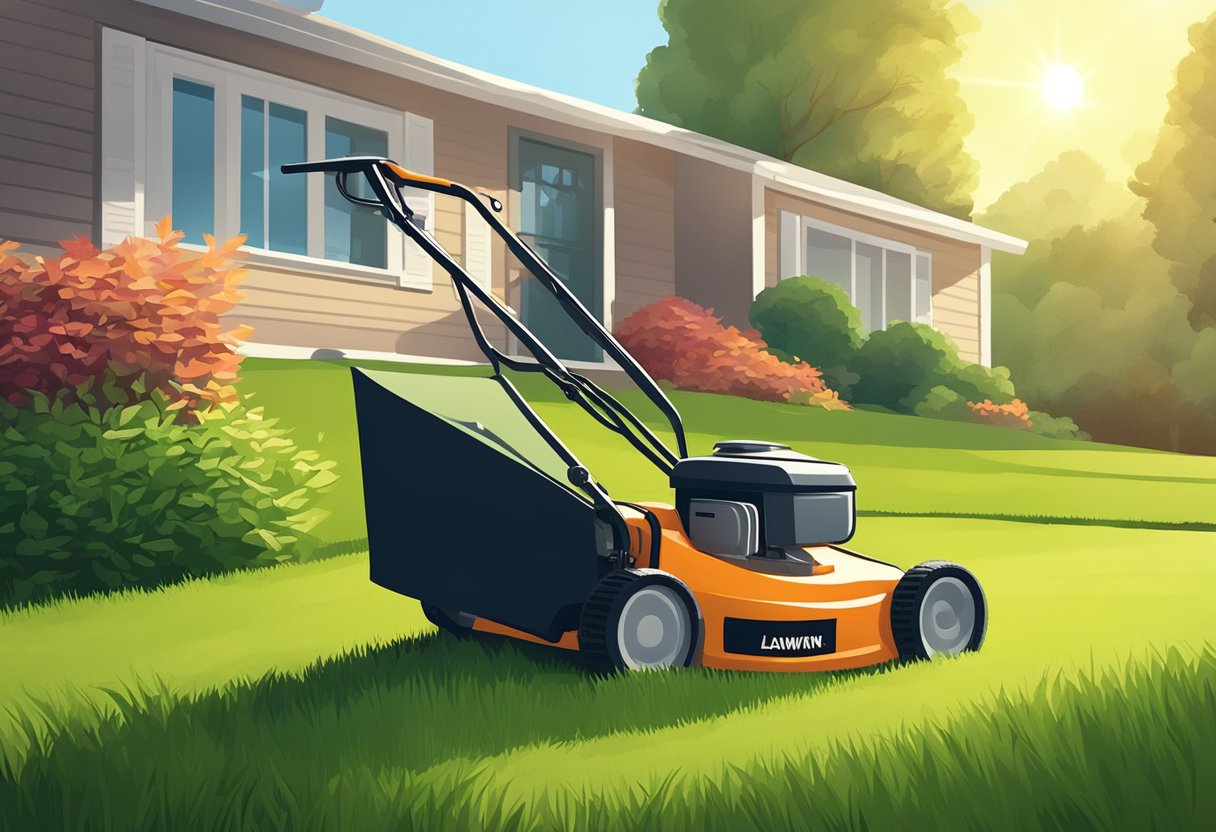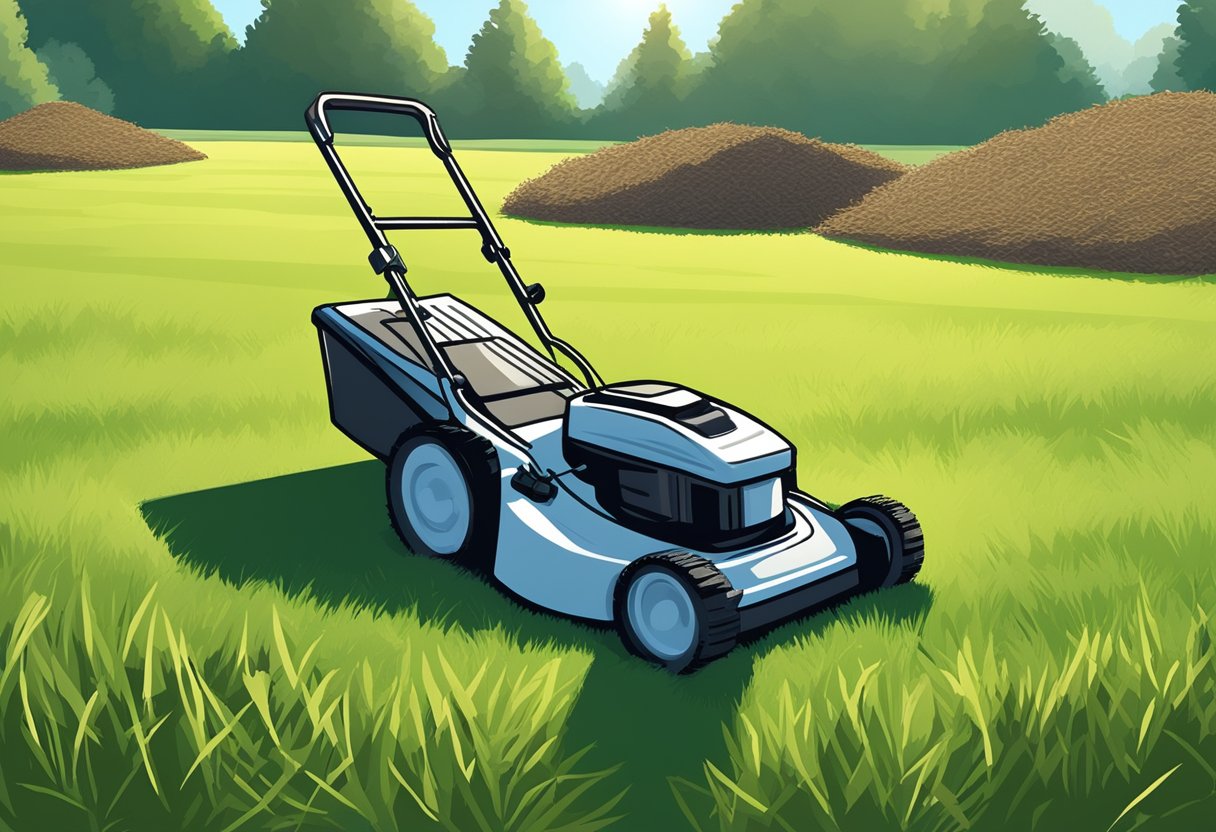As we gear up for the burgeoning spring, we homeowners face the annual question: to bag or to mulch during the first mow of the season? This decision isn’t merely about personal preference; it can have lasting effects on the health and appearance of our lawns. The first mow of the year sets the tone for the growing season ahead, and we should approach it with care and consideration for the best results.

When our lawn wakes up from winter dormancy, it’s eager to grow, and so are the myriad of hidden debris and thatch within. Bagging is often recommended for the initial mow. Why? Because it removes the dead grass, leaves, and other residual materials that have accumulated over the winter. This not only tidies up our lawn but also prevents potential issues like disease and weed proliferation that might compete with the fresh growth.
On the other hand, mulching has its benefits throughout the season, returning nutrients to the soil and maintaining moisture levels. Yet, for the first cut of the year, mulching could lead to a build-up of thatch and hinder the sunlight and nutrients vital for new growth. Our approach should be to start the season with a clean slate by bagging, then switch to mulching once our lawn is established and growing robustly. This method promotes a lush, healthy lawn that we can enjoy throughout the spring and summer months.
Preparing for the First Mow: Fundamentals of Lawn Care

The success of the first mow in spring hinges on correctly assessing the lawn’s condition and setting up the mower to best support grass health and soil vitality.
Assessing Lawn Condition
Before we start the mower, it’s essential to inspect the lawn for signs of new growth and readiness. We check for uniformity in grass height, which should surpass the recommended mowing height for the specific grass type. Here’s a quick guide to optimal initial cutting heights for various grass types:
- Fescue, Ryegrass, Bluegrass: 2.5–3.5 inches
- Bermuda, Zoysia: 1–2 inches
- Tall Fescue: 2–3 inches
Examining the lawn also includes removing debris and assessing thatch levels, which may hinder growth if not managed properly. A healthy lawn in spring should ideally show vibrant color and active growth, indicating that the grass is no longer dormant and ready for mowing.
Selecting the Right Mower Settings
Once we’re confident the lawn is ready for its first cut, setting up the mower correctly is crucial for a healthier lawn. We ensure a sharp mower blade to precisely cut the grass without damaging it, minimizing the risk of disease. The rule of thumb is to aim for a cutting height that trims no more than one-third of the grass blade to foster strong roots and nutrient-rich soil.
Here’s a quick checklist we follow while tuning the mower:
- Grass Type: Choose a higher setting for cool-season grasses (Fescue, Ryegrass) and lower for warm-season ones (Bermuda, Zoysia).
- Blade Sharpness: Sharpen or replace blades to ensure a clean cut.
- Clean Deck: Clear the underside of the mower deck to prevent clumping and uneven cuts.
By tailoring the mower to our lawn’s needs, we set the stage for a season of robust growth and maintained appearance.
The Great Debate: Bagging vs. Mulching

When deciding how to manage grass clippings for the first mow of the season, we’re faced with two primary practices: bagging and mulching. These methods impact not only lawn health but also the appearance and maintenance needs.
Benefits of Bagging
- Aesthetics: Bagging offers a clean, manicured look by removing all grass clippings.
- Disease Control: Removing clippings can reduce the spread of lawn diseases.
Bagging is ideal when:
- The lawn has overgrown during winter and grass length is excessive.
- There is a presence of weed infestation or harmful insects in the grass, and removing clippings could prevent spread.
- Personal preference leans towards an immaculate backyard appearance.
Advantages of Mulching
- Natural Fertilizer: Mulching returns nitrogen, phosphorus, and potassium to the soil, acting as a natural fertilizer.
- Moisture Retention: Grass clippings help retain moisture, reducing the need for watering.
Mulching is effective when:
- Grass blades are cut at a recommended length, avoiding the creation of dead spots.
- Mowing occurs regularly, preventing the clippings from suffocating the grass.
- The goal is to maintain a healthy lawn with less need for synthetic fertilizers.
Factors Influencing the Decision
- Grass Type: Warm-season grasses may benefit more from mulching than cool-season varieties like Kentucky bluegrass.
- Lawnmower Type: Mower blades designed for mulching cut grass into fine pieces that decompose quickly.
- Seasonal Considerations: Post-winter mowing might require bagging if the grass is particularly long or damp.
- Wildlife: Some homeowners prefer to mulch to provide a habitat for beneficial insects.
By considering these factors and assessing our personal preference, care routine, and the specific conditions of our lawn, we can make an informed decision between bagging and mulching.